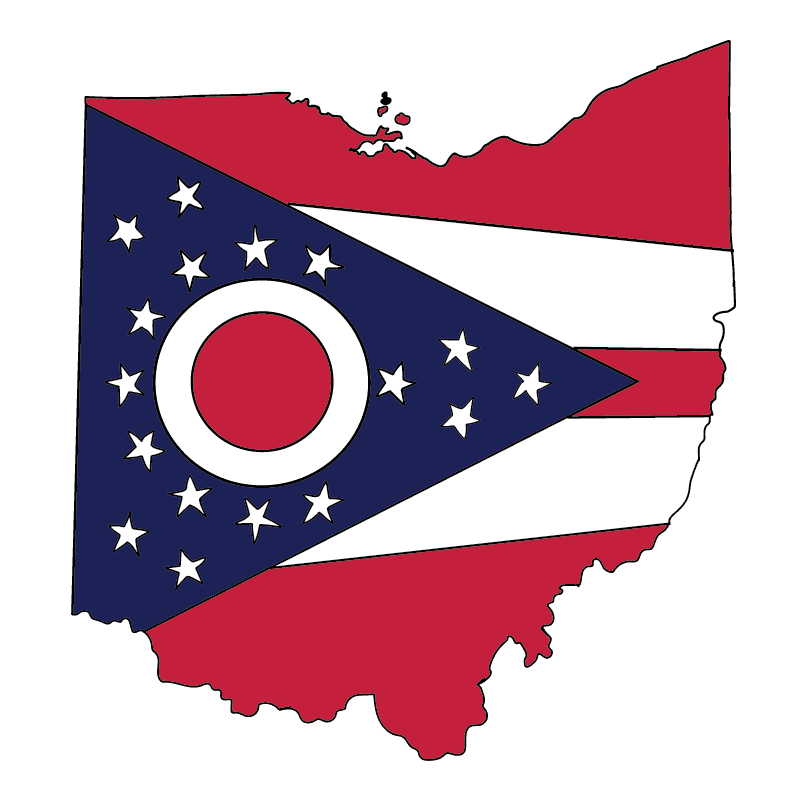Ohio is a state that has a rich history, culture, and love for rose flowers. These blooms have been a part of Ohio’s landscape for many years. Additionally, the rose has played an important role in the economy, culture, and history of Ohio. The state’s favorable climate, fertile soil, and abundant water supply make it an ideal location for growing roses.
The history of roses in Ohio dates back to the early 1800s when settlers first began to cultivate roses in the state. Over time, the cultivation of roses became an important industry in Ohio. Many nurseries and growers have specialized in the production of roses. Today, Ohio is home to many rose gardens, parks, and festivals that celebrate the beauty and history of this beloved flower.
At this point, we will explore the story of the rose in the history and culture of Ohio. We will delve into the state’s rose-growing industry, the various types of roses that are grown in Ohio, and the many festivals and events that celebrate this beloved flower.
Historical Roots
The history of roses in Ohio dates back to the early 20th century. One of the first rose gardens in the state was established in 1913 in Goodale Park. It was designed and named after botanist William Goodale. Additionally, he was instrumental in establishing the Ohio State University Botanical Garden.
In the 1950s, the Columbus Rose Club and the Central Ohio Rose Society came together to create the Columbus Park of Roses. It is now one of the largest public rose gardens in the country. The park features over 12,000 different roses, including pre-1867 rose cultivars and modern hybrids. The garden is divided into several sections, including the Formal Rose Garden, the Heritage Rose Garden, and the Perennial Garden.
Ohio is also home to several rose festivals. For example, the Spring Bulb Festival by Hollandia Botanical Gardens features various activities for all ages. Today, Ohio continues to be a major hub for rose enthusiasts and a leader in the cultivation and preservation of these beautiful flowers.
Cultural Significance
Roses have played a significant role in Ohio’s culture and history. In the early 1900s, Springfield and Clark County became the largest rose grower and exporter in the United States. Moreover, the city’s nickname, “Rose City,” is a testament to its rich horticultural heritage.
The Buckeye State has a long-standing tradition of celebrating roses. The Columbus Park of Roses is a 13-acre public park and rose garden that is home to over 12,000 roses. The park’s beauty and serenity make it a popular destination for visitors and locals alike. Ohioans also celebrate the rose through various festivals and events. The Cleveland Rose Society Rose Show is an annual competition to showcase the best roses in various categories.
At present, there are several rose societies in the state in affiliation with the American Rose Society. These are:
- Millstream Rose Society
- Forest City Rose Society
- Lancaster Rose Club
- Greater Cincinnati Rose Association
- Northeastern Ohio Rose Society
- Western Reserve Rose Society
- Toledo Rose Society
- Cleveland Rose Society
- Delaware Area Rose Society
In addition to its cultural significance, roses have also been used for medicinal and culinary purposes. The petals, hips, and leaves of roses are used to make tea, jam, and syrup. Roses are also used in cosmetics and perfumes due to their fragrant aroma.
Overall, the cultural significance of roses in Ohio is undeniable. From its rich horticultural heritage to its annual festivals and events, roses continue to be a beloved symbol of the Buckeye State.
Economic Impact
In Ohio, rose cultivation has become an important part of the state’s economy, contributing significantly to the agricultural sector.
According to recent data from the Ohio Department of Agriculture, the rose industry in Ohio is worth millions of dollars annually. In Ohio, numerous rose farms and nurseries grow a wide variety of roses for commercial and personal use.
Rose cultivation in Ohio has created a number of jobs and continually generates good revenue. The industry provides employment opportunities to farmers, farm workers, and those involved in the processing and distribution of roses. Additionally, the sale of roses contributes to the overall revenue of the state’s agricultural sector.
In recent years, there has been an increasing demand for locally grown roses in Ohio. This has led to the growth of small-scale rose farms, which are able to provide high-quality, fresh roses to local markets. This trend has also resulted in an increase in the number of farmers’ markets and other local outlets that sell locally-grown roses.
Overall, the economic significance of rose cultivation in Ohio cannot be overstated. The industry provides employment opportunities, generates revenue, and contributes to the state’s overall economy. With the increasing demand for locally grown roses, the future of the rose industry in Ohio looks bright.
Artistic & Literary Influence
Ohio has a rich history of artistic and literary works that have been influenced by the rose.
The earliest depictions of roses in Ohio art can be traced back to the 1800s. During this time, artists began to incorporate the rose into their paintings and sculptures, often using it as a symbol of love and beauty. One of the most famous examples of this is the painting “Roses Lying on Gold Velvet” by Ohio artist Martin Johnson Heade. This painting is considered to be one of Heade’s most iconic works.
In 19th-century literature, writers like Harriet Beecher Stowe used the rose as a symbol of love and beauty in their works. For example, Stowe’s novel “The Tea Rose” mentions roses several times in her book.
Finally, the rose has been a popular subject in Ohio poetry. Many Ohio poets, such as Paul Laurence Dunbar and Mary Oliver, have written poems about the rose, using it as a symbol of love, beauty, and passion. For example, in Dunbar’s poem, “She Gave Me a Rose,” the flower is used to symbolize love. On the other hand, in Oliver’s poem “When the Roses Speak, I Pay Attention,” the flower is used to symbolize life and death.
Overall, the rose has had a significant influence on Ohio art and literature and continues to be a popular symbol in creative works across the state.

EXCLUSIVE Ohio COLLECTION
Visit Store
From Clothes & Apparel To Home Décor & Accessories. Free Returns. Unique Designs. Worldwide Shipping.
